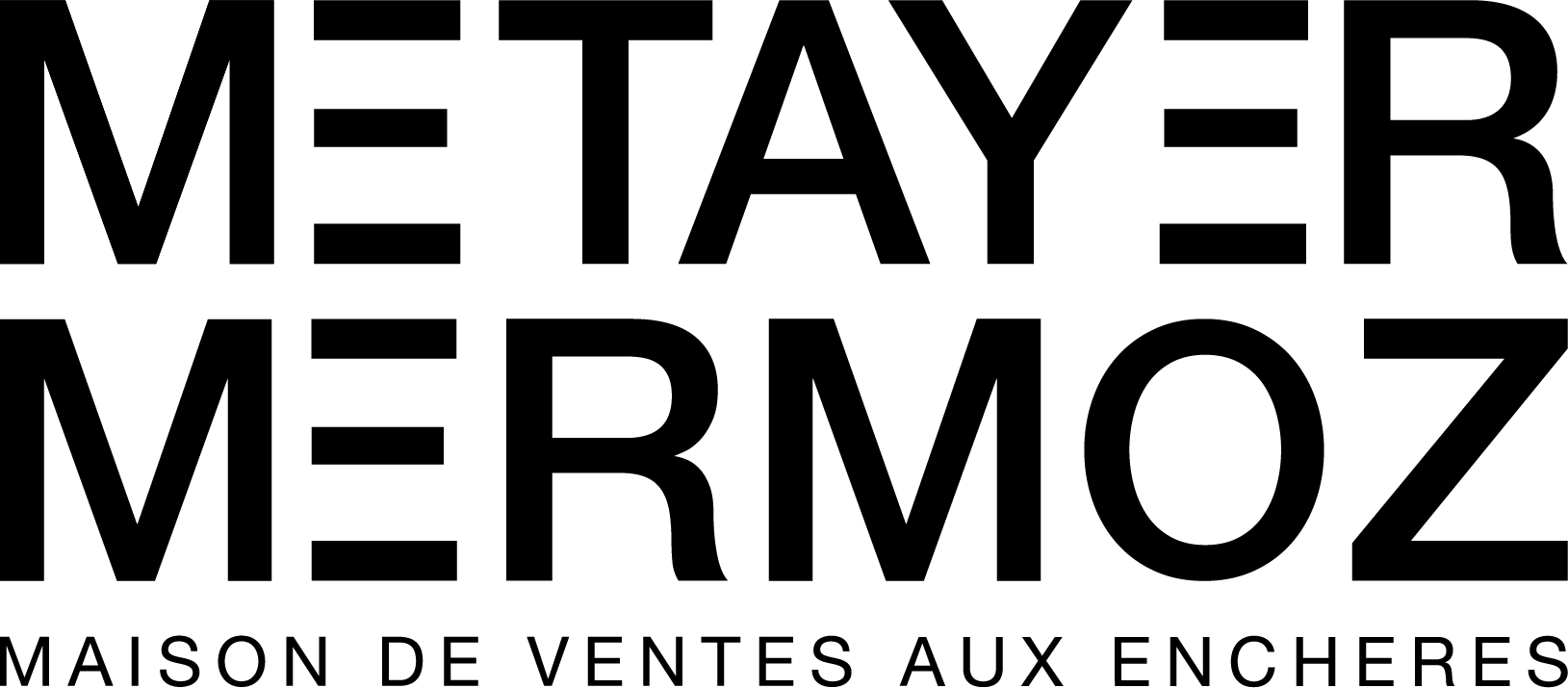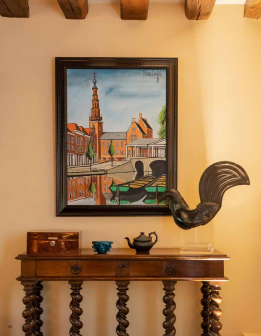Lot n° 31
Estimation :
400000 - 600000
EUR
Result without fees
Result
: 4 754 500EUR
Sayed Haider RAZA (1922-2016).
Agrarian... - Lot 31 - Métayer-Mermoz Maison de Ventes aux Enchères Antibes
Sayed Haider RAZA (1922-2016).
Agrarian Landscape, 1961.
Large oil on canvas, signed lower right and dated (19)61.
The back of the canvas countersigned, marked "P_327'61" and "206 x 120 cm".
H_120 cm W_200 cm
In a black baguette frame.
Provenance: Galerie Lara Vincy, Paris, acquired circa 1965-1966.
Collection of Mr. and Mrs. C.
This work will be included in the revised edition SH RAZA, Catalogue Raisonné, Volume I, (1958-1971) by Anne Macklin on behalf of The Raza Foundation, New Delhi (Image ref SR2761). Our painting is referenced by an early photographic print in the archives of Galerie Lara Vincy.
ATTENTION:
To bid live on this lot, please contact the auction house by e-mail at antibes@metayer-auction.com
WARNING:
To be able to bid live on this lot, please contact the auction house by mail before to register, at antibes@metayer-auction.com
We would like to thank The Raza Foundation, New Delhi, who, in a letter dated May 4, 2023, confirmed the inclusion of this painting in the artist's Catalogue Raisonné.
Our personal thanks go to Ms Anne Macklin, researcher and editor of the catalog raisonné of Sayed Haider Raza's work, for her assistance in compiling the description of our painting.
Born in Babaria, Madhya Pradesh in 1922, Raza moved to the bustling streets of Bombay in 1943 to study at the Sir J.J. Schoolof Art. In Bombay, he became one of the founding members of the revolutionary Bombay Progressive Artists' Group formed in the year of India's Independence in 1947. His works of this period are fluid watercolours of landscapes and townscapes his most notable works being those that depict the rains of the monsoon flooding the streets of his new city. With little money and few acquittances, these early years were challenging for Raza.
However, Raza's move to France in 1950 to study at the École des Beaux-Arts, Paris saw a change in both his style and fortunes. In France, Raza immersed himself in the culture, visiting the country's many museums and art galleries and travelling extensively throughout Europe. Initially, his works were influenced by medieval and Renaissance art, Cézanne's cubist style and the intricate Indian miniatures of home. Raza's paintings were carefully constructed townscapes in gouache, as Jacques Lassaigne noted 'strange and unusual works: timeless landscapes, uninhabited cities detached from earth, bathed in cold light'.
Raza finished his studies in 1953 and this year coincided with his move away from gouache to oils, a move which proved to be decisive in his artistic evolution. The restrained manner of his 'classic' period was replaced with a more fluid technique resemblant of the work of the Post-Impressionists. Raza continued to paint organized landscapes that show visible elements such as church spires, houses and trees, but they are now a spectacle of colour and shape. As Rudolf von Leyden comments,
"the gouache technique in tempera was to give way to impasto in oil. The change of medium and manner was not merely technical but signified a fundamental change of attitude. The scholar, who had measured and calculated, burst through the confines of a limited understanding of colour and space created by colour into a sphere of full realization. The transformation created such passion that one could best describe this age of Raza as the age of the Lover. This triumphant handling of paint, this living paint can only be understood as an act of love. His colours take on an entirely new complexion. Brilliant reds and yellows stand out against large looming forces of black and deep Prussian blue. Shapes dissolve in seas of colours which are by no means unorganized and fluid but seem to move and evolve within the space of the painting."
Over the coming years, Raza's works became less and less tied to a specific place and instead sought to evoke a temperature, a season, a climate, a time or a feeling. His brushstrokes became more spontaneous, his forms more fluid, his use of colour more sensuous. Paysage Agreste, as a work of 1961, lies at the junction between Raza's portrayal of the 'tangible' world and his move towards an increasingly emotive use of colour and form. As the title implies, this work is not a depiction of a specific location, but rather a 'rustic landscape'. The group of houses on the hillside are enveloped by the wild and rugged terrain below and the dark and brooding sunset above. Each component is blocked out in thick paint in crisscrossing planes of blood red, deep ochre yellow, terracotta orange and black blended with olive green. Any darkness is lifted with flecks of white and bright cobalt blue. This painting is a striking patchwork of colours and forms where the differentiation between each element is delightfully blurred.
Such freedom and emotive use of paint were further encouraged by both the Abstract Expressionism he encountered during his time in America an
My orders
Sale information
Sales conditions
Return to catalogue


